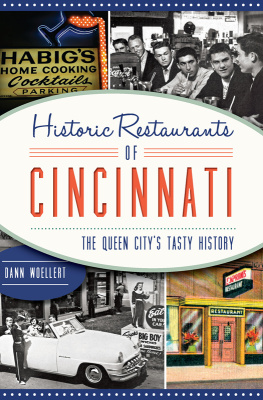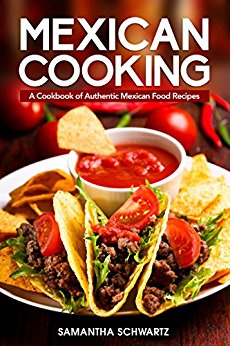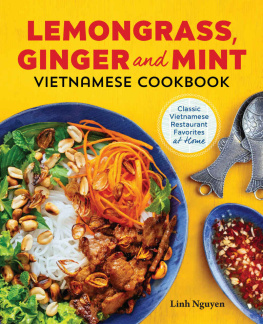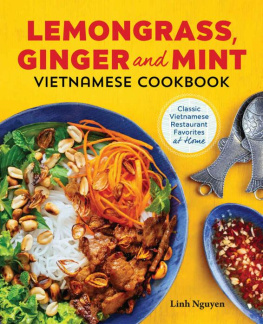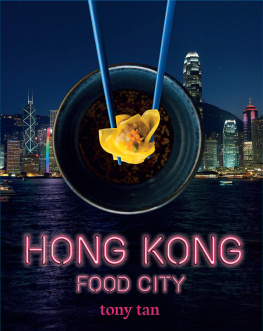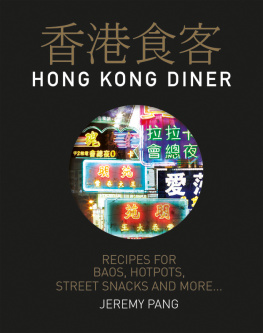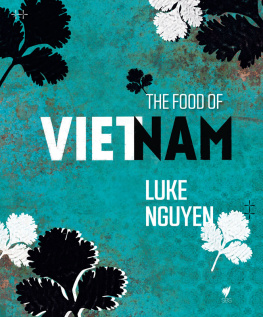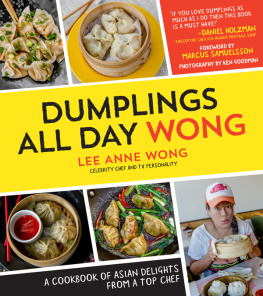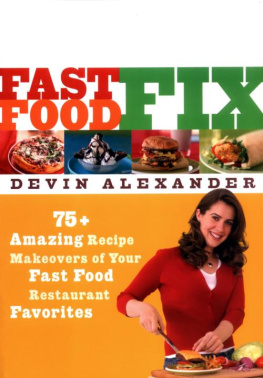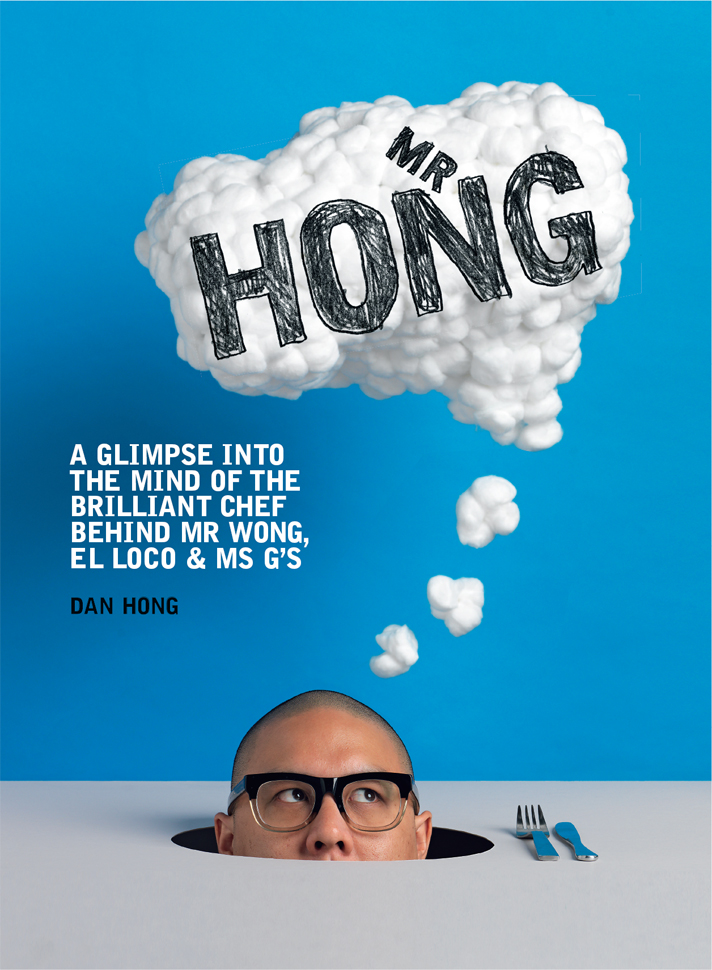FOREWORD
This last summer as I was sitting on the floor of my son Daniels apartment playing with my almost one-year-old granddaughter Namira, I found myself wondering what she will be like when she gets older. What will she want to do for work? Will she have Daniels attitude and passion for life? (As a Vietnamese grandmother, it is never too early to wonder these things.) Daniel, for most of his teenage years, didnt know what he wanted to do for a career.
He grew up in the 80s in the northern suburbs of Sydney when there was a huge influx of migrants to Australia, particularly from South East Asia. Due to my work as a translator, Daniel and his two sisters, Francoise and Rebecca, were left to their own devices from a young age to fend for themselves in the kitchen. Id marinate chicken in lemongrass, chilli and garlic and leave it in the fridge before I left for work, and theyd come home from school, figure out how to cook it, steam rice and feed themselves (this may have also been the time Daniel discovered his love of the frozen food aisle at the supermarket). What they missed in family company during the week, we made up for every Sunday with visits to Cabramatta where large family feasts at their grandparents house would take place. Here, traditional Vietnamese cuisine blended with our French heritage and meals included everything from perfect terrines and pts to very traditional Vietnamese soups and stews of offal, blood jelly and plenty of chilli. Frequent trips with the kids back to Vietnam also opened up their eyes to the world of food, and I believe those experiences really helped to shape Daniels palate.
It wasnt just about the food of our culture. As the kids grew older and Sydney became even more multicultural, our family outings for food took us around the world. On rare nights when I wasnt working at my restaurant in Cabramatta or Newtown, we would travel to Turkey one night, Laos the next, followed by Lebanese, Chinese, and even the occasional fine diner.
I noticed through these early years, Daniels natural interest in being in the kitchen (as well as his love for eating), so I suggested to him that he might do a cooking apprenticeship. Now, after dedicating over a decade and a half to the kitchen, my son has become a successful chef, known for his innovative and dynamic approach.
I will admit that Daniel was not an easy child to raise, and him asking me to write this foreword may be my only opportunity to tell the world how much heartache he gave me! But when he told me he didnt know what he wanted to do after high school was over, I told him I didnt mind so long as he worked hard and followed his passion otherwise, it is a waste of time. This is the way Daniels father, Le, and I both approached parenting. He would say to all of them, Work hard, love each other and be happy. And while our family unit has changed over the years, as a role model, he always leads by example.
I believe Daniels success is a combination of hard work, determination and a fearless approach to discovering new ideas and using them to create his own way. Cooking has become the most honest way he communicates his personality, his feelings and his ideas. As a parent, all you can hope for is for your child to find themselves and be at peace with who they are and Im so proud (and relieved) that Daniel has managed to find that for himself.
Angie Hong
INTRODUCTION
I wasnt really sure what to call this book. Most of the cookbooks and food books that I admire are named after the chefs first restaurant, but I cant really do that because I dont technically have one. Instead, I seem to have found myself in the position of being responsible for creating the ideas for, and (in a way) giving birth to, a handful of restaurants based in Sydney, Australia. From sorta-Mexican (El Loco), to Chinese (Mr Wong) and modern Asian (Ms Gs), they each have a distinct DNA the experiences they give people are completely different, from look to feel and most importantly, taste. The one thing they do have in common though, is that theyre all about big flavours, and above all things, fun.
The food I create at each venue comes from my own mixture of life experiences, from growing up in my mums Vietnamese restaurant, Thanh Binh, in Cabramatta, to experimenting with supermarket staples while left at home to my own devices during high school, and later, my culinary training at some of Australias best restaurants. Its been an unlikely progression of events, to say the least. I also tend to get a bit obsessive about particular kinds of food and my mates and I go out on mammoth eating missions trying to find the best ramen, Korean fried chicken or burgers. When I find a dish I like, I eat it, research it, eat it, break it down until I can understand what makes it tick and, lastly, I eat it again (and again, and again).
While many of the recipes in this book can be found on the menu at the restaurants I created them for, this book isnt about a restaurant concept, or a single type of cuisine. Its more about a collection of stories from my life to date. The idea is that by sharing it with you, youll get a window into how I create the food that I do. I grew up in the suburbs. I didnt do that well at school. I like sneakers, rap and am a shamelessly big eater. I dont think Im an overly outspoken person, but I think that cooking is my way of expressing my emotions. My families my real one, my work one and my friends make me who I am. And its the lessons theyve taught me that have allowed me to see food as something that connects people, makes them happy, and that should be shared with the people in your life.
The food in this book is the stuff I like to cook, eat and share. I come from a fine dining culinary background, but along the journey to working out my own personal cooking style, I found that what made sense to me didnt relate to anything molecular or even highly technical. Its relaxed, should be enjoyed in company, the flavours should punch you in the face (and youll like it). Like the food of my Vietnamese heritage, its about bold, strong flavours, freshness and balance. There are a few guilty pleasures thrown in for good measure (handy for hangovers, late night pantry raids or grossing out health-obsessed friends). There are also useful tips that you can use in your own culinary journey to help you develop your own style. In short, this book is about food you want to eat. And I hope you do.
STUFF YOURE
GOING TO NEED
Theres nothing worse than getting started on a recipe and realising you dont have the right equipment. Chefs have all the toys, so it can sometimes be a challenge for a home cook to replicate restaurant recipes in their own kitchen. You don't need to have a Pacojet or a Thermomix at home, but there are a few key pieces of equipment youll find handy when cooking recipes from this book.


